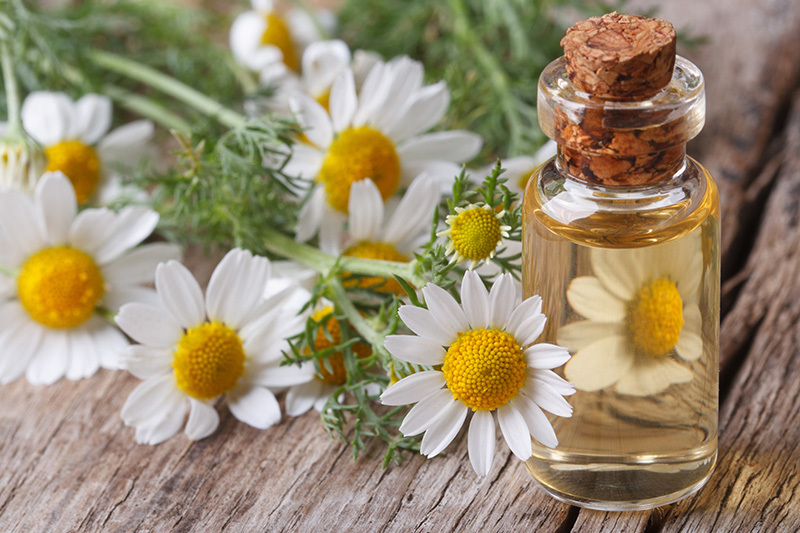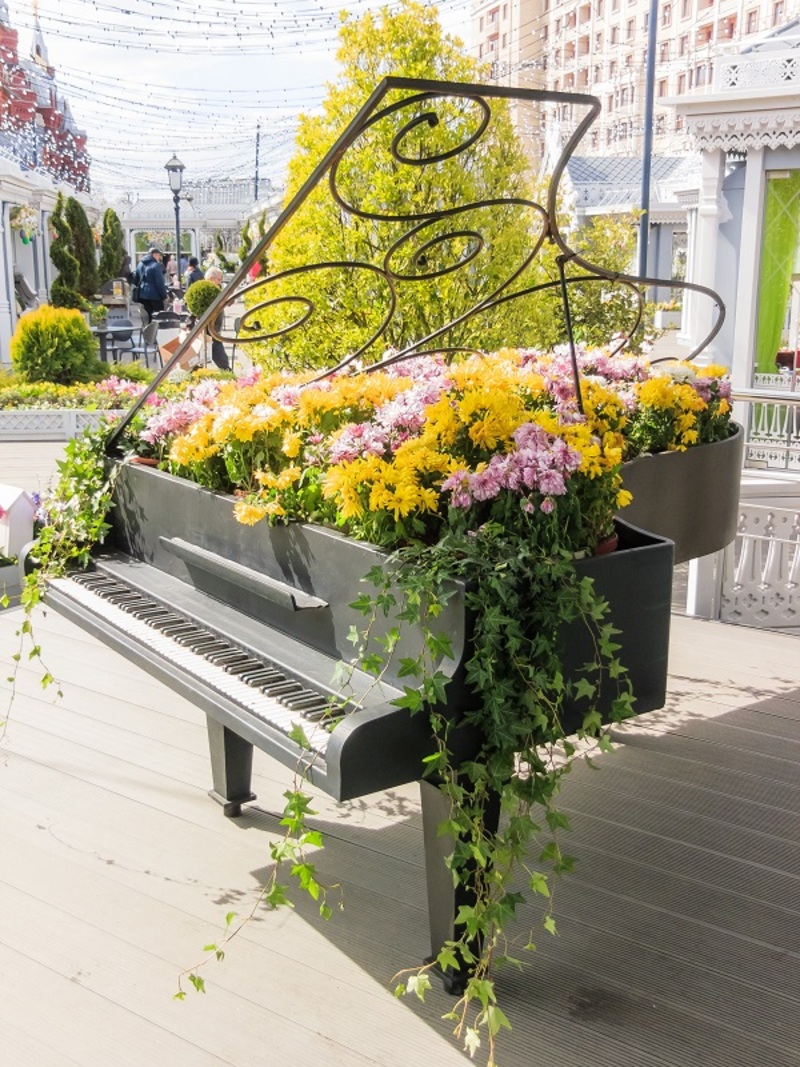Tulip Trivia: 7 Facts That Will Surprise You
Posted on 21/08/2025
Tulip Trivia: 7 Facts That Will Surprise You
Tulips are among the most beloved and recognizable flowers in gardens and bouquets around the world. While many admire their charming colors and elegant forms, the story of tulips is much deeper and more fascinating than most realize. From royal grandeur to economic frenzy, from quirky botanical secrets to cultural symbolism, the world of tulips is brimming with surprises. This comprehensive article explores seven amazing tulip facts that are sure to astonish and delight both novice gardeners and seasoned horticulturists. Whether you're a fan of flower trivia or simply curious about the deeper story behind these blooms, this article is packed with essential tulip knowledge.
1. Tulips Originated Far from the Netherlands
When most people think of tulips, they immediately associate them with the Netherlands--iconic windmills, vibrant tulip fields, and bustling flower markets. Yet, did you know the true origin of tulips lies elsewhere?
- Tulips originally hail from Central Asia, particularly regions that are now part of modern-day Kazakhstan, Uzbekistan, and Kyrgyzstan.
- They thrived naturally in the wild, flourishing in the mountain slopes and valleys under harsh weather conditions.
- The word "tulip" is believed to derive from the Turkish word "tulbent" meaning "turban," alluding to the flower's resemblance to a traditional headpiece.
How did tulips reach Europe? Traders and explorers brought tulip bulbs to the Ottoman Empire, where sultans cherished them as rare and exotic treasures. Europeans later discovered tulips in Ottoman gardens, especially during the 16th century. From there, the journey to the Netherlands--and eventual global stardom--began in earnest, leading to the flower's iconic status today.

2. Tulip Mania: The World's First Recorded Economic Bubble
This is one of the most astonishing tulip facts for history enthusiasts: During the 1630s, the Netherlands experienced a period known as Tulip Mania, considered the world's first economic bubble.
What was Tulip Mania?
- Tulip bulbs became so extremely valuable that people traded them at prices higher than the value of a house!
- Speculators, from wealthy merchants to everyday citizens, bought and sold tulip bulbs hoping to profit from the rising prices.
- The demand for rare and uniquely patterned varieties (particularly broken tulips with streaks and flames) fueled the frenzy even further.
This speculative bubble burst dramatically in 1637. Prices crashed overnight, devastating many investors and shaking the Dutch economy. Tulip Mania remains a cautionary tale for economists and historians about the dangers of speculative trading and market bubbles.
3. Tulips Have Hidden Meanings and Symbolic Power
Tulips aren't just admired for their beauty--they carry deep symbolic significance in many cultures:
- Red tulips symbolize true love and passion. Giving someone a red tulip is akin to declaring your deepest romantic feelings.
- Yellow tulips historically represented hopeless love, but today, they are often associated with cheerful thoughts and sunshine.
- Purple tulips denote royalty and elegance, harkening back to their status as rare garden prizes in ancient courts.
- White tulips signify forgiveness, purity, and new beginnings.
- Multicolored or striped tulips can represent beautiful eyes or admiration for uniqueness.
A bouquet of tulips, therefore, often carries a layered message. Understanding the shades of meaning behind these blooms elevates both gifting and gardening them into acts of intentional beauty.
4. There Are Over 3,000 Tulip Varieties!
When you picture "a tulip," you might imagine a classic red or yellow cup-shaped flower. In reality, the tulip family is incredibly diverse--one of the reasons tulips are a perennial favorite among flower growers and florists:
Explore the World of Tulip Varieties
- There are over 3,000 officially registered tulip varieties, classified into 15 groups according to their bloom time, flower shape, and genetic lineage.
- Popular groups include:
- Darwin Hybrid tulips: Known for their large, robust blooms and exceptional longevity.
- Triumph tulips: Classic, sturdy flowers perfect for cut arrangements.
- Lily-flowered tulips: Boasting pointed petals that curve outward, creating a star-like shape.
- Parrot tulips: Famous for their feathered, ruffled edges and dramatic color combinations.
- Fringed tulips: Characterized by delicately fringed petal tips that add whimsy and texture.
- Color range: Virtually every color except true blue exists, making tulips a versatile choice for garden designs and floral artistry.
Tulip aficionados continuously experiment with new hybrids, striving to create ever more vibrant, resilient, and fascinating blooms. The variety is truly endless!
5. Their Blooming Season Is Surprisingly Short
One of the most surprising tulip facts is that their breathtaking beauty is fleeting. Tulips are renowned for their spectacular, but short-lived spring display:
- Typical blooming period: Late March to early May, depending on the region and specific varieties.
- Most tulip varieties bloom for only 7 to 10 days each year. The overall "tulip season" lasts six to eight weeks, as different cultivars flower in succession.
- Tulips prefer cool temperatures and fade quickly in hot, sunny conditions.
Many famous tulip festivals--like the Keukenhof Gardens in the Netherlands--carefully plan plantings to orchestrate a continual wave of bloom and color. If you're hoping to enjoy a garden full of vibrant tulips, consider choosing a mix of early, mid, and late-season varieties!
6. Tulips Are Edible--But Handle With Caution!
Another aspect of tulip trivia that will surprise many is that tulip petals are technically edible. However, they come with important warnings:
- Tulip petals and bulbs have been consumed in times of hardship, particularly during World War II in the Netherlands when food shortages were dire.
- The taste varies from sweet and pea-like to somewhat bitter or bland, depending on the variety.
- Not all tulip bulbs are safe to eat--some can cause stomach upset, nausea, or even more serious reactions due to alkaloids present in the plant.
If you're eager to experiment, only use petals from organically grown, unsprayed tulips and consult reliable sources. Never eat tulip bulbs or petals in large quantities, and always err on the side of caution.
7. Tulip Cultivation: A Blend of Art and Science
Tulip gardening isn't just a matter of burying bulbs and waiting for spring. Successful tulip cultivation involves a blend of artistry and botanical know-how:
Tips for Planting and Growing Tulips
- Plant bulbs in the fall, approximately 6-8 weeks before the ground freezes. This timing ensures that bulbs experience the necessary cold period to trigger blooming.
- Choose a sunny location and well-drained soil: Tulips detest "wet feet." Bulbs are prone to rot if exposed to standing water.
- Depth is key: Plant bulbs 6-8 inches deep for best results and to protect against squirrels or temperature fluctuations.
- After tulips have bloomed, allow the leaves to wither naturally before trimming. The foliage continues to photosynthesize, storing energy for next year's blossoms.
- Many gardeners "lift and store" tulip bulbs after the foliage dries, especially in warm climates where summer moisture can lead to bulb rot.
Did you know? Scientists and horticulturalists continue to study tulips to improve their disease resistance and color palette, making the tulip a focus of both historical gardening tradition and modern plant science.

Bonus Tulip Trivia: Astonishing World Records
- The largest tulip garden: Keukenhof Gardens in the Netherlands, home to over 7 million tulip bulbs every spring!
- Tallest tulip: Some varieties can reach a height of 30 inches (76 cm) or more under optimal conditions.
- Longest-lasting cut tulip: With proper care, some tulip arrangements can stay fresh in a vase for up to two weeks.
Conclusion: The Colorful Legacy of Tulips
Tulips are more than just a springtime delight--they are cultural icons, scientific wonders, and historical curiosities wrapped in a rainbow of petals. From their Central Asian origins to the manic frenzy of Tulip Mania, from the secret symbolism of their colors to their place on the kitchen table, the world of tulips is filled with fascinating flower facts and surprises at every turn.
Whether you're a gardener, a flower enthusiast, or a lover of odd historical tales, let your newfound tulip knowledge enrich your next visit to a blooming field or inspire your next floral arrangement. Share these surprising tulip trivia facts with friends and family--the story of tulips is one that truly blooms the more it's told!
Want to Learn More Tulip Trivia?
For deeper dives into tulip history, care tips, or to discover the latest breathtaking varieties, visit local botanical gardens, attend tulip festivals, or check out reputable gardening websites. There's always more to explore in the ever-evolving world of tulip fascination!
Latest Posts
Understand What Your Birth Flower Says About You and Your Journey
Step-by-Step Care for Vibrant Hydrangeas
Tulip Trivia: 7 Facts That Will Surprise You







